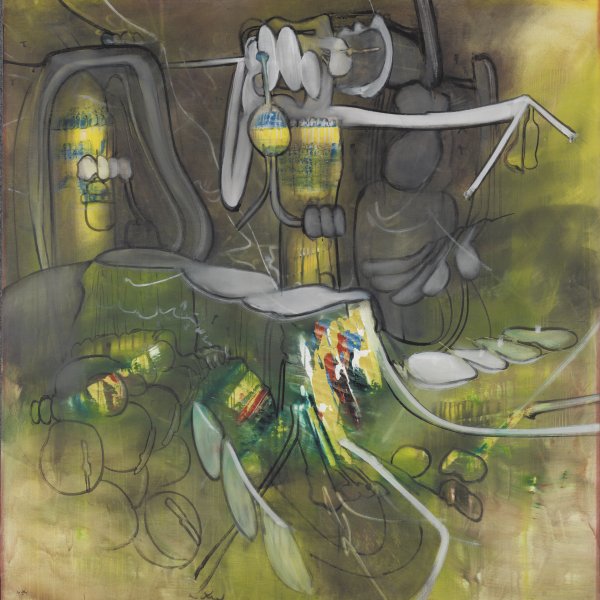Matta
An architect by training, Roberto Sebastián Antonio Matta started out in painting as a self-taught artist and joined the Surrealist movement. In 1931 Matta travelled from his native Santiago de Chile to Paris to work at Le Corbusier’s studio. In 1934 he visited Spain and met Federico García Lorca and Salvador Dalí. During these years he also travelled to Scandinavia, where he came into contact with Alvar Aalto, Russia and also London, where he worked for a brief spell with Walter Gropius and László Moholy-Nagy. In 1937 he collaborated with Josep Lluís Sert and Luis Lacasa on the Pavilion of the Spanish Republic at the Paris Exposition Internationale, where Picasso’s Guernica had a great impact on him. That year he met André Breton, who had expressed an interest in his drawings, which conjured up subjective, fanciful landscapes. In 1938 he was invited to take part in the Exposition Internationale du Surréalisme and remained linked to the Surrealist group until his expulsion ten years later.
When the Second World War broke out in 1939, Matta moved to New York and soon began to frequent the company of Jackson Pollock, Arshile Gorky and Mark Rothko. In 1942 his works were exhibited at the Pierre Matisse Gallery, where they were admired by the young American artists. During a trip to Mexico in 1941 he became acquainted with the work of the Mexican muralists. As a result his works became larger, and in this he also influenced his American friends. Finally, when the Cold War began, he returned to Europe in 1948, lived between Paris and Rome, and was granted French nationality in 1969. After living in Chile during the rule of Salvador Allende, he spent his final years between Paris and Tarquinia.









